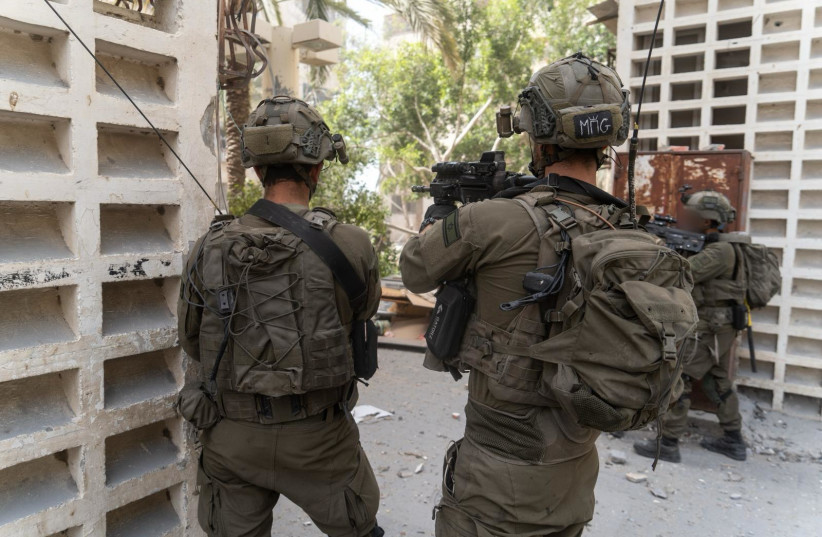Israel’s eyes on the northern border, six months after start of war in Gaza
On the six-month anniversary of October 7 – the day that hundreds of Israelis were brutally raped, beaten, murdered, and kidnapped, and the ensuing war began – Israel pulled its ground troops out of the southern Gaza Strip.
Israel’s eyes are now on the northern border, a place where the tensions and attacks have been simmering. As the war in Gaza became more visible, tangible, and quantifiable, the concerns of many began to shift northward, with an eye to Hezbollah in Lebanon and further east to its proxy patron, Iran.
While our attention was understandably split, the IDF withdrew its largest battalion from the Gaza Strip. The move, and lack of immediate explanation by the military, sparked a sense of unease and fear among Israelis, for two reasons: They see the Gaza operation as incomplete, and fear that troops are being taken out of the enclave because the “real” war is about to break in the North.
In reality, however, the IDF had announced that it concluded the active invasion stage of the war – for now. This does not mean that a future new invasion of Rafah in deep southern Gaza is off the table.
That is also heavily dependent on several factors, including humanitarian, security, diplomatic, and others, and can change at any moment.
Whether you support the operation’s continuation to “completion,” however that is interpreted, or you demand an immediate ceasefire, the nuance relating to the military’s actions is critical.

IDF withdraws all Division 98
The IDF has withdrawn all Division 98 from Khan Yunis in southern Gaza while maintaining one-plus brigades – the Nahal Brigade and portions of Brigade 401 – in northern and central Gaza.
The impact of this on the six-month mark is unmistakable. Since the war broke out, as of press time, 604 soldiers have been killed in combat and 3,188 wounded. Some 9,100 rockets crossed into Israeli territory from the Gaza Strip and 3,100 more from Lebanon.
Over 12,000 terrorists had been killed in Gaza throughout the last six months, and 32,000 targets were attacked in airstrikes. So the question remains: Why leave Southern Gaza just now?
Israelis have had many a reason to glare in suspicion at the IDF, especially in recent months. Whether it be the response to the October 7 massacre, the treatment of female soldiers, the unintended killing of civilians, or even the methods employed in the Gaza Strip, the military has never been under more scrutiny than it is right now.
IDF Chief of Staff Lt.-Gen. Herzi Halevi appointed a team to investigate the events leading up to Israel being surprised on October 7 by Hamas’s invasion and massacre.
By the year’s end, many top generals – including Halevi himself – are expected to resign over their failure to prevent that unprecedented tragedy.
Indeed, senior sources have revealed that Halevi intends to announce his resignation between September and December. Until then, he will finish the internal investigations regarding the war and present them to the relevant government officials.
The IDF has also faced many a doubtful eyebrow raised over its actions in Gaza, especially over incidents such as the humanitarian aid convoy catastrophe in February or last week’s killing of World Central Kitchen aid workers.So, Israel’s army has a lot to be held accountable for.
But when it comes to the operation’s overarching plan, there has never been any doubt: the IDF knows what it is doing. So, when Sunday’s announcement about the halted invasion in southern Gaza came, the public was left as confused as ever.
As mentioned, everyone was looking in fearful anticipation towards the North, so when the announcement came, the fear was that the conclusion of the active invasion was a sign of something amiss.
The IDF can be questioned on the micro-level, but what has it done in the past six months to warrant distrust on the macro level?
Trust your military. It knows what it’s doing – and that is all we can hope for.





Comments are closed.